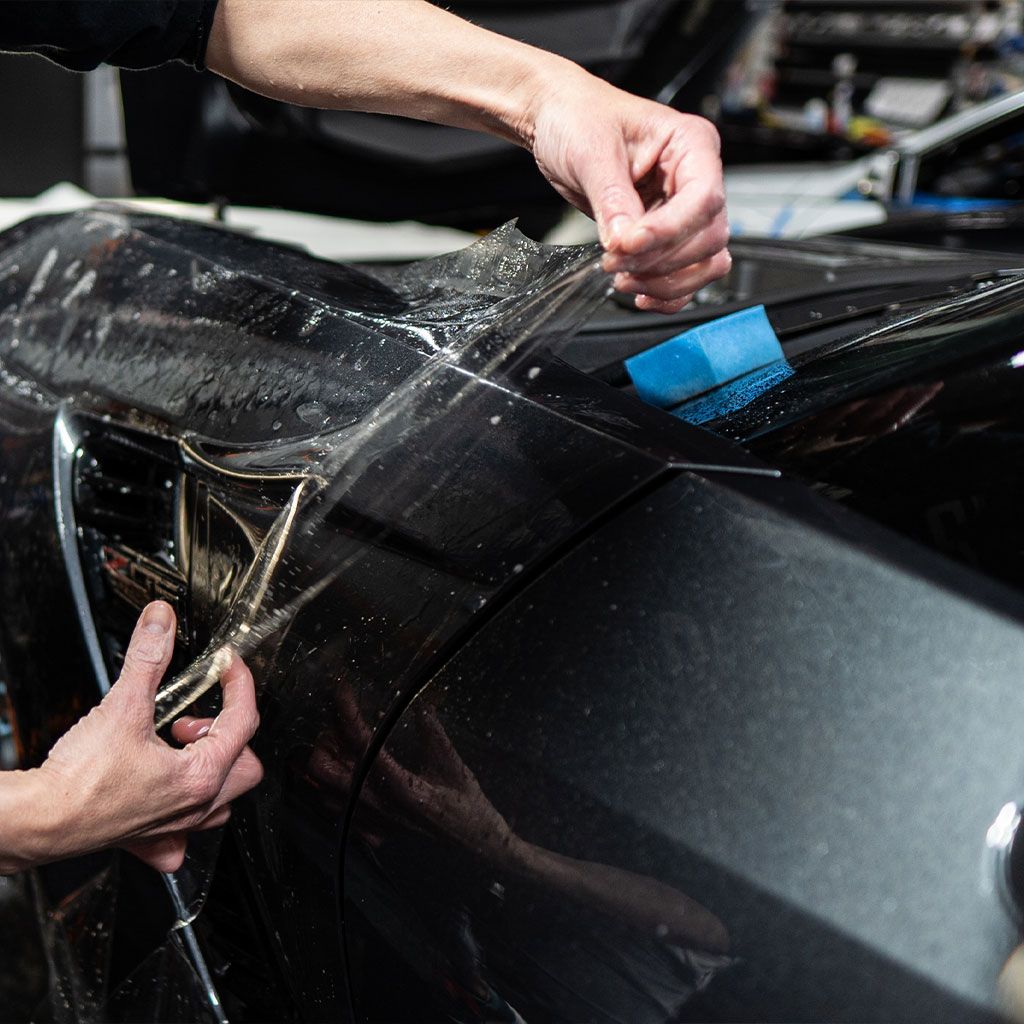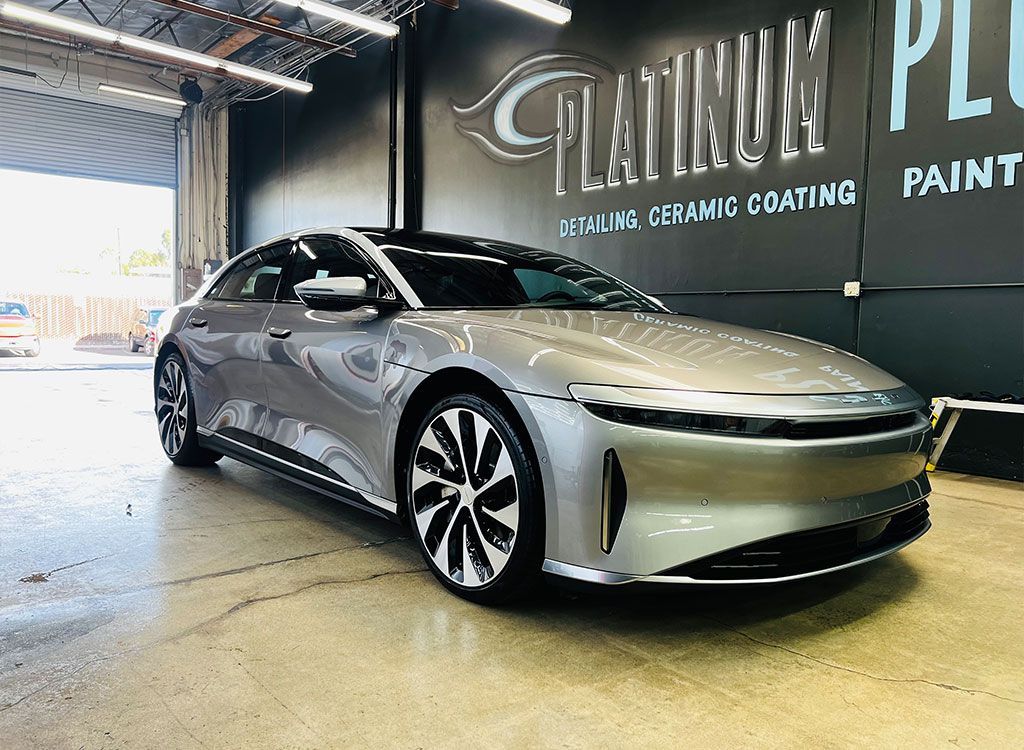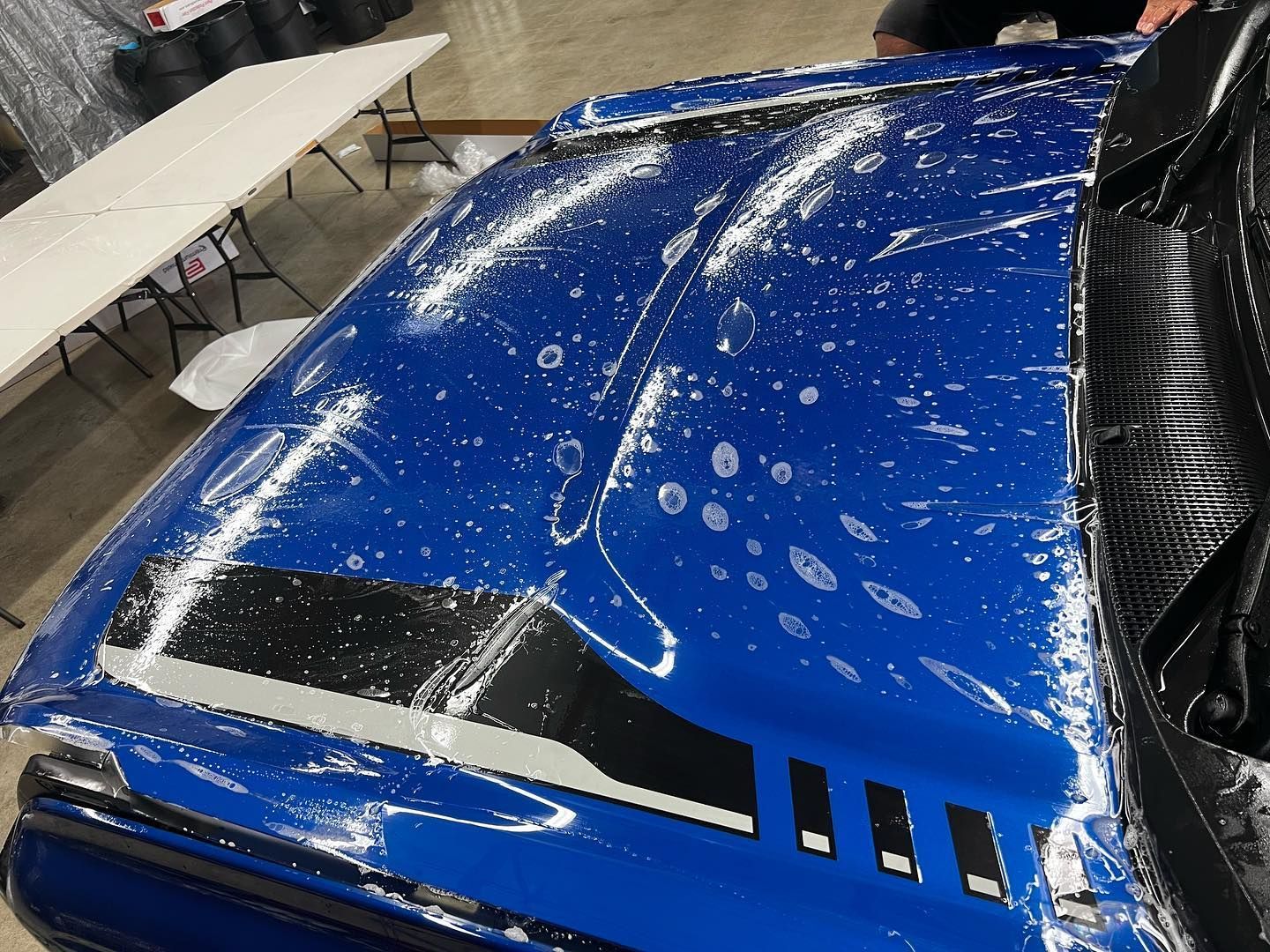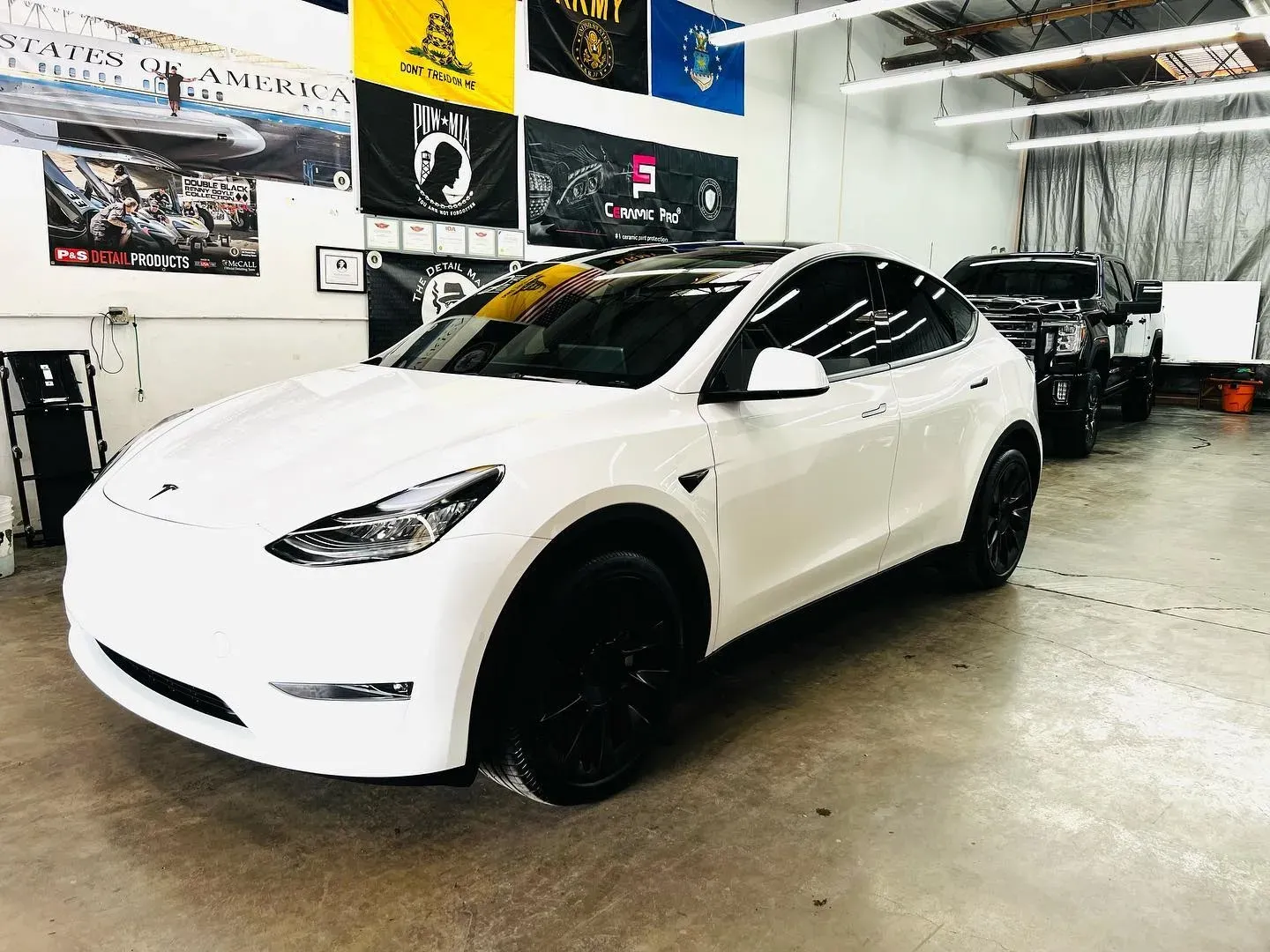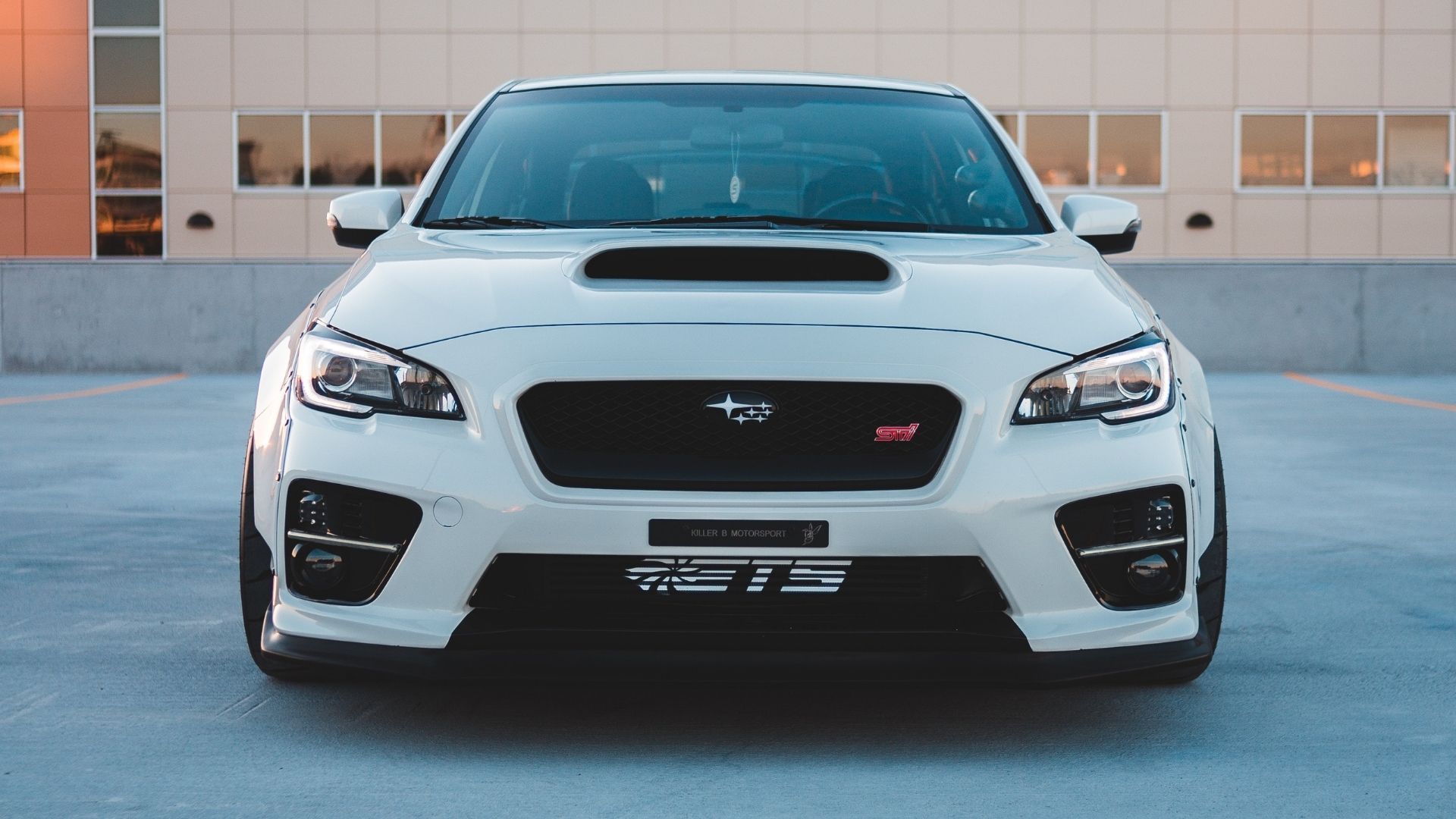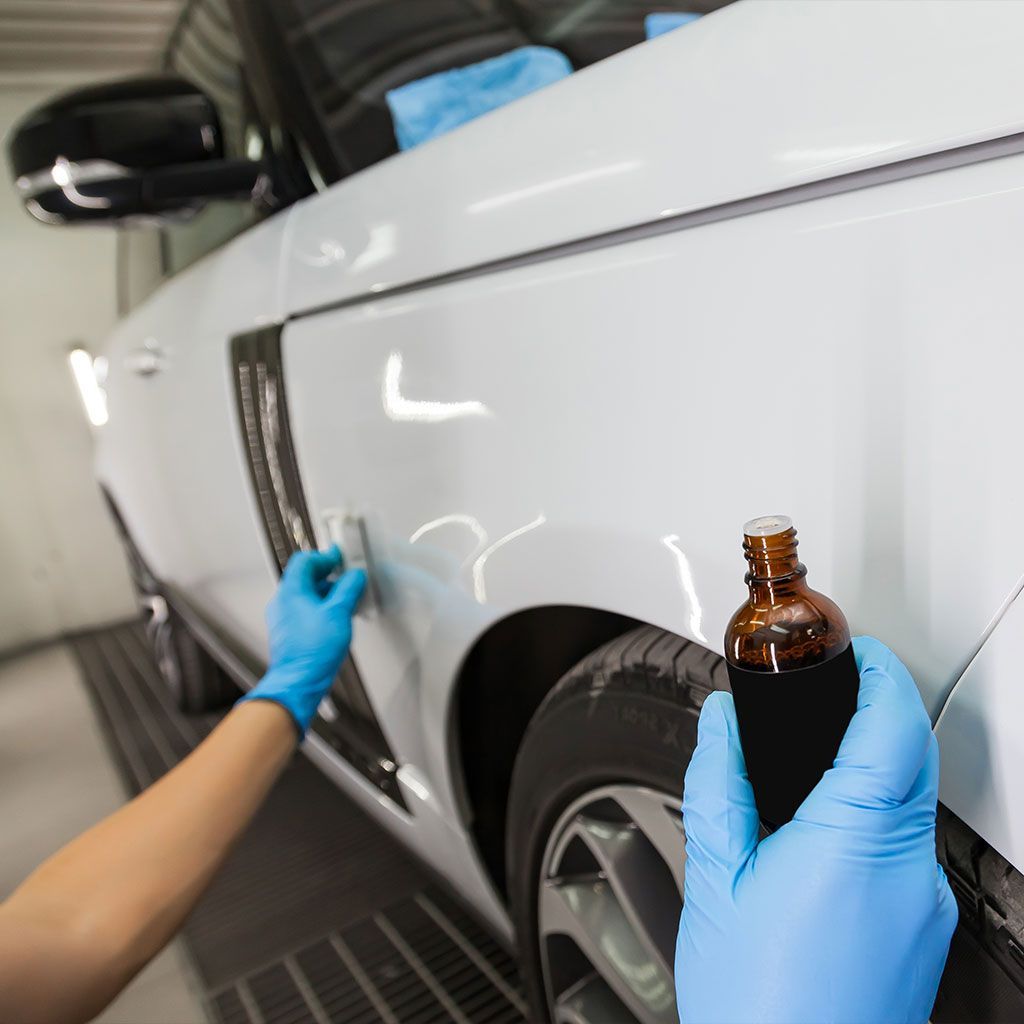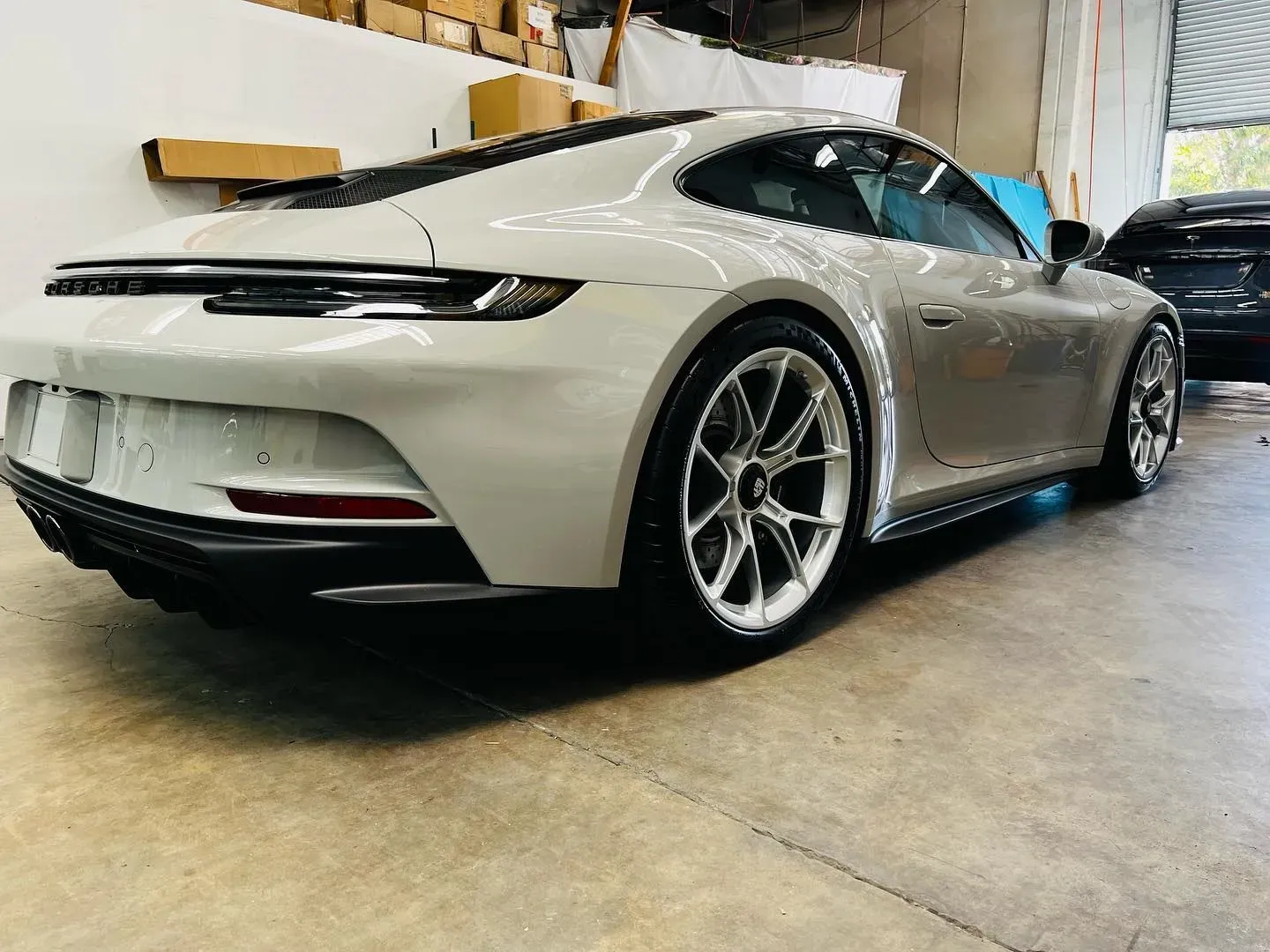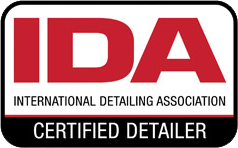Has your car recently been treated with a ceramic coating, and you're eager to hit the road, flaunting its sparkling new finish? Patience is key, as this high-quality protective layer needs time to cure properly. Understanding how long it takes for a ceramic coating to cure can impact both the longevity and performance of the treatment.
In this blog post, we delve deep into understanding the nitty-gritty of ceramic coating cure times, all to ensure that your car's protective shield lives up to its full potential. Read on and equip yourself with knowledge that will keep your car looking shiny and new for longer!
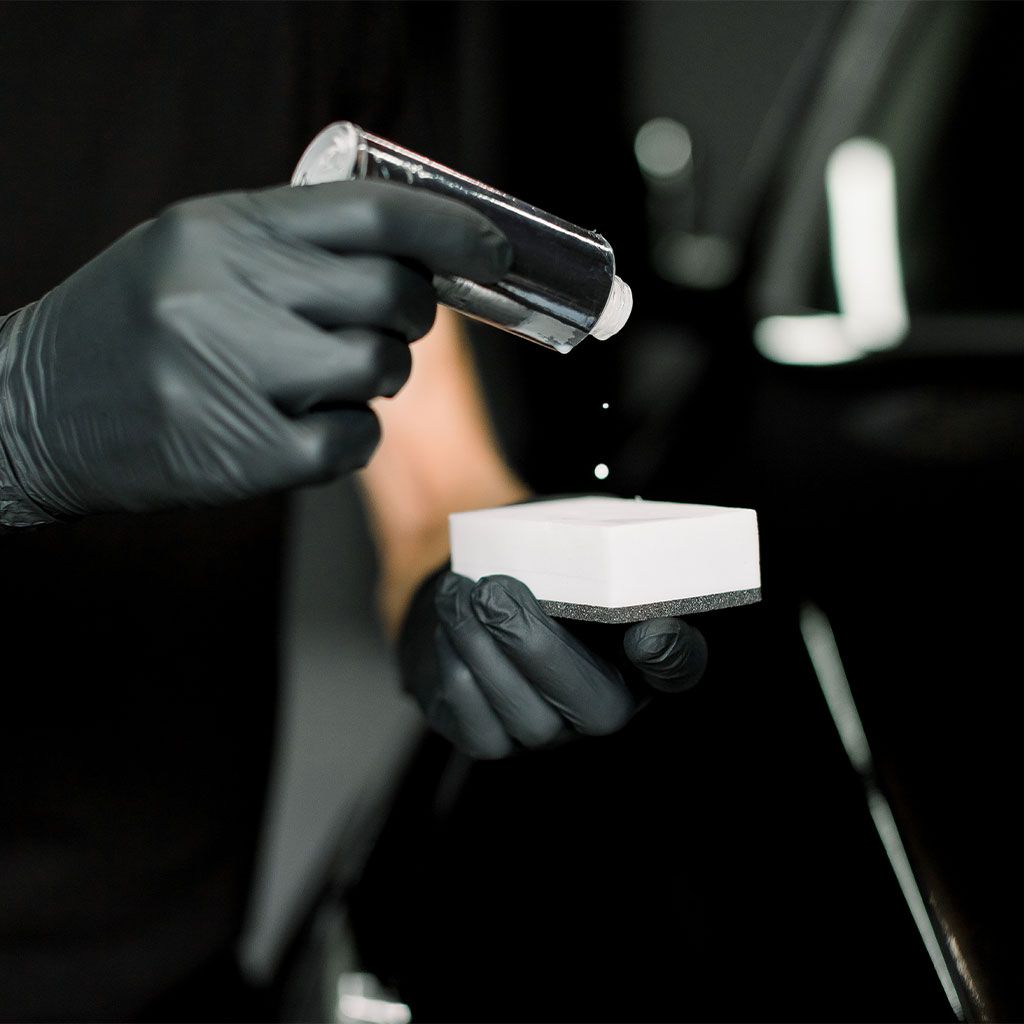
The Ceramic Coating Cure Timeline
When it comes to ceramic coatings, understanding the cure time is crucial for achieving optimal results. The cure time refers to the duration it takes for the coating to fully bond and harden onto the surface of your vehicle. This timeline can vary depending on different factors, such as the brand of ceramic coating used, environmental conditions, and application techniques. Let's take a closer look at the stages of the ceramic coating cure process.
Initial Cure Stage
The initial cure stage marks the period immediately after the ceramic coating has been applied to your vehicle. During this stage, the coating begins to chemically bond with the paintwork or other surfaces. Typically, this process takes around 24 to 48 hours, but it can vary based on factors such as temperature and humidity.
It's important to note that during the initial cure stage, you should avoid exposing your vehicle to water or any kind of moisture, as it can disrupt the bonding process.
Additionally, avoid washing or touching the coated surfaces during this time to prevent any potential damage or imprints.
During this waiting period, patience is key. While it might be tempting to examine or touch the freshly coated surfaces, it's best to let nature take its course and allow the coating ample time to bond effectively.
Once the initial cure stage is complete, we move on to the next stage in the ceramic coating cure timeline - the full cure stage. During this phase, the coating continues to strengthen and harden, providing maximum protection and durability for your vehicle's surface.
Full Cure Stage
Once the ceramic coating has been applied to your vehicle, it enters the full cure stage. This is the period during which the coating fully bonds with the surface of the paint and develops its maximum protective properties. It's important to note that while ceramic coatings offer immediate benefits like increased gloss and hydrophobicity, they reach their full potential over time. The duration of the full cure stage can vary depending on factors such as temperature, humidity, and the specific product used. In general, it takes around 24 to 48 hours for a ceramic coating to fully cure and provide optimal protection.
Preparing Your Vehicle for Ceramic Coating
Before applying a ceramic coating to your vehicle, it's crucial to properly prepare the surface to ensure optimal adhesion and long-lasting results. This preparation process involves several key steps that should not be overlooked.
Firstly, thoroughly wash and decontaminate your vehicle's exterior. This includes removing any dirt, dust, or debris that may be present. A power washer or foam cannon can help effectively clean the surface and remove stubborn contaminants.
Next, you'll want to perform a paint correction process, if necessary. This involves removing any scratches, swirl marks, or imperfections from the paintwork. Paint correction can be done by hand or with a machine polisher, but it is recommended to seek professional assistance for best results.
Afterward, it's essential to ensure that the surface is completely dry before applying the ceramic coating. Any moisture or water droplets left on the paint can interfere with proper bonding and affect the performance of the coating.
Lastly, you may consider using a panel wipe or surface prep solution to remove any traces of oils or residues that could hinder adhesion. This step helps to create a clean and pristine surface for optimal bonding between the ceramic coating and your vehicle's paint.
By thoroughly preparing your vehicle before applying a ceramic coating, you not only enhance the overall aesthetic appearance but also maximize the longevity and effectiveness of the protective coating.
Surface Cleaning and Preparation
Before applying a ceramic coating, it is crucial to ensure that the surface of your vehicle is thoroughly cleaned and prepared. This step sets the foundation for a successful coating application and helps to achieve optimal adhesion and longevity.
Begin by washing your car with a high-quality automotive shampoo to remove dirt, grime, and any previous protection products. Pay attention to areas like wheels, tires, and door jambs, as they can accumulate significant dirt buildup. Once the vehicle is clean, use a clay bar or a contaminant removal product to eliminate any embedded contaminants or bonded pollutants.
Imagine you're preparing a canvas for painting. You wouldn't start applying paint without first cleaning the surface and ensuring it's smooth and free from imperfections. Similarly, thorough cleaning and preparation of your car's surface are essential to ensuring the ceramic coating bonds effectively.
Next, perform a paint correction process if necessary. This step involves removing scratches, swirl marks, oxidation, and other imperfections on the paint surface. Paint correction not only enhances the appearance but also allows the ceramic coating to bond more efficiently.
Furthermore, it is highly recommended to use an appropriate surface preparation product, such as an alcohol-based cleaner or a dedicated prep solution. This will help remove any remaining oils, residues, or polishing compounds that could interfere with the bonding process.
Once the surface is clean and properly prepped, you are ready to move onto the next crucial step: ceramic coating application.
Ceramic Coating Application
The application of ceramic coating involves careful and meticulous work to ensure even coverage over the entire painted surface of your vehicle. It typically requires several steps and specific techniques to achieve desirable results.
Start by dividing your car into manageable sections to make the application process more manageable. Apply a small amount of ceramic coating to an applicator pad or an applicator sponge. Then, using light pressure and overlapping motions, spread the coating onto the paint surface in a consistent and even layer.
Think of this step as painting a canvas with a fine brush. Applying the ceramic coating requires attention to detail, ensuring that each section receives an even layer without any streaks or missed spots.
After applying the coating to a particular section, allow it to sit for a specified period according to the manufacturer's recommendations. This allows the solvents in the coating to evaporate and enables proper bonding with the paint.
Once the recommended curing time has elapsed, use a clean microfiber towel to gently wipe away any excess or residue left behind by the coating. Repeat this process for each section of your vehicle until the entire surface is coated.
Remember to follow any additional instructions provided by the specific ceramic coating product you are using, as different brands may have variations in application techniques and curing times.
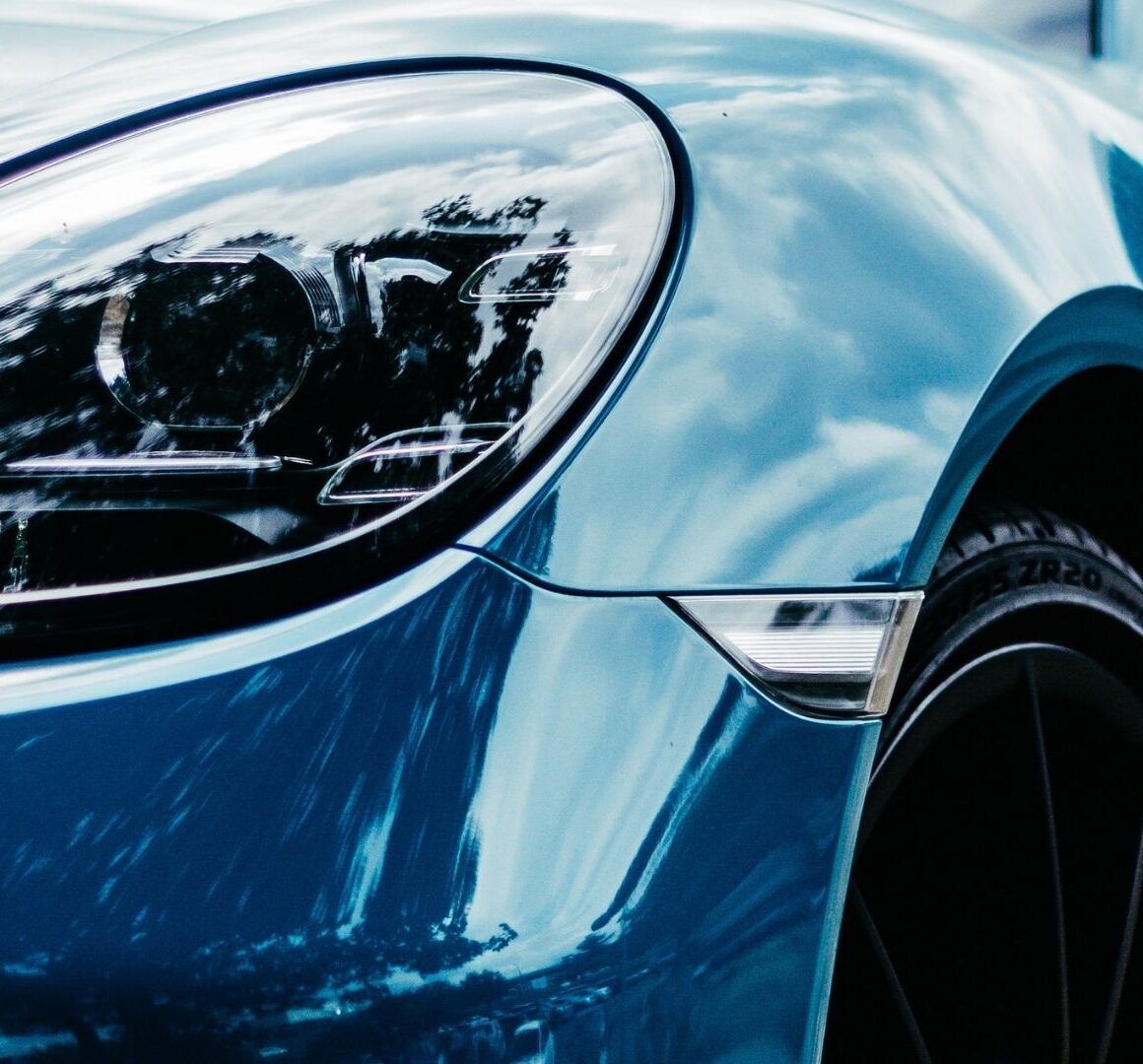
THE CURING PROCESS: STEP-BY-STEP
Ceramic coating is a popular choice for car owners looking to protect their vehicles' paintwork and enhance their appearance. Let's take a step-by-step look at what happens after the ceramic coating is applied.
- Preparation: Before applying the ceramic coating, the vehicle needs to be thoroughly cleaned and decontaminated. This ensures that the surface is free from dirt, grime, and any other substances that could hinder the bonding process.
- Application: Once the vehicle is prepared, the ceramic coating is carefully applied using specialized techniques. It is important to follow the manufacturer's instructions to ensure proper coverage and even application.
- Initial Bonding: After application, the ceramic coating starts to bond with the vehicle's paintwork almost immediately. This initial bonding allows for some level of protection right away.
- Evaporation: As time passes, solvents within the ceramic coating start to evaporate. This evaporation process helps the coating become more adhesive and form a stronger bond with the paint surface.
- Cross-Linking: Cross-linking refers to the chemical reaction that occurs within the ceramic coating as it cures. This process strengthens the protective layer and enhances its durability.
- Complete Cure: While initial bonding and evaporation occur relatively quickly, achieving a complete cure can take some time. The curing process can range from a few hours to several days, depending on various factors such as temperature, humidity levels, and the specific ceramic coating product used.
It's important to note that during the curing process, it is best to avoid exposing the coated vehicle to water or harsh chemicals. This can help ensure that the ceramic coating properly adheres and fully cures for optimal performance and longevity.
CONDITIONS AFFECTING CERAMIC COATING CURE TIME
The curing time for ceramic coatings can vary based on several conditions. Understanding these factors can help car owners manage their expectations and ensure the best outcome for their ceramic coating application.
- Temperature: Higher temperatures generally accelerate the curing process, while colder temperatures slow it down. It is advisable to apply ceramic coatings in a controlled environment with moderate temperatures to allow for a proper cure time.
- Humidity: High humidity levels can extend the curing time since moisture in the air can interfere with the evaporation process. Lower humidity levels, on the other hand, assist in quicker drying and curing.
- Coating Thickness: The thickness of the applied ceramic coating can influence the cure time. Thicker layers may require additional cure time compared to thinner ones.
- Product Type: Different ceramic coating products have varying cure times specified by their manufacturers. It's essential to follow these guidelines and allow sufficient time for complete curing.
Taking these conditions into account, it is crucial to consult the manufacturer's instructions and recommendations for specific guidance on curing times and any additional precautions or requirements that may be necessary.
So, as you ponder ceramic coating, remember that
Platinum Plus Detailing is your partner in this transformative journey. Our meticulous approach maximizes the coating's potential, granting your vehicle unmatched protection, enhanced gloss, and ease of maintenance. Elevate your car's appeal and longevity—choose Platinum Plus Detailing for a journey beyond excellence.


